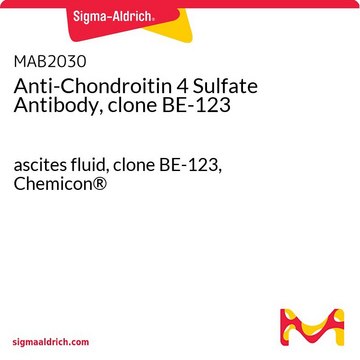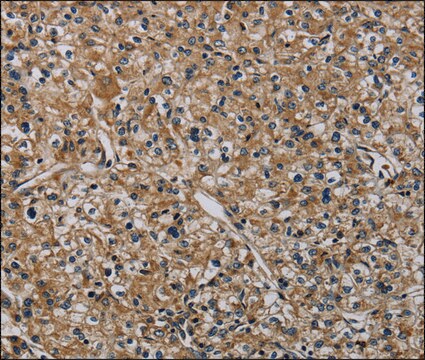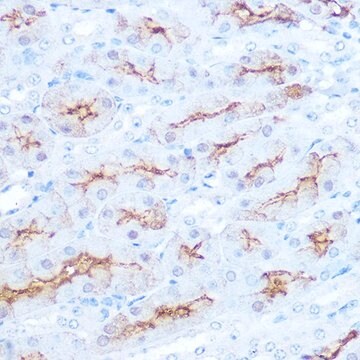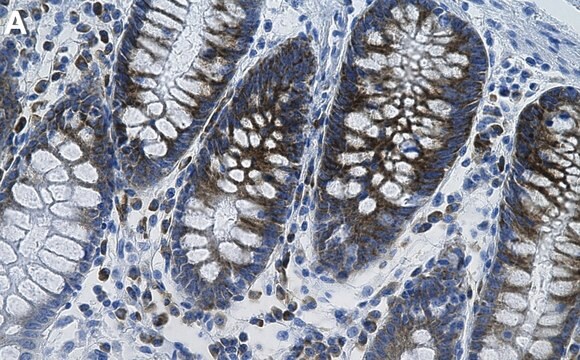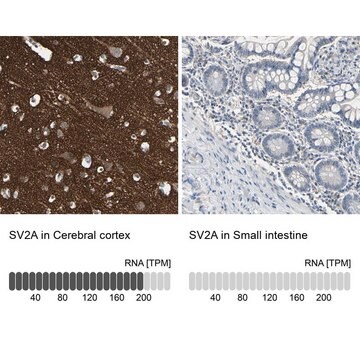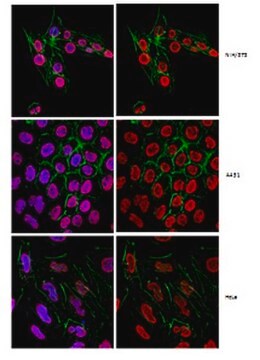ABN2270
Anti-phospho AEP (Ser226)
from rabbit
Synonym(e):
Legumain, Asparaginyl endopeptidase, Protease cysteine 1, Delta Secretase
About This Item
Empfohlene Produkte
Biologische Quelle
rabbit
Antikörperform
affinity isolated antibody
Antikörper-Produkttyp
primary antibodies
Klon
polyclonal
Speziesreaktivität
human
Verpackung
antibody small pack of 25 μg
Methode(n)
activity assay: suitable
immunofluorescence: suitable
western blot: suitable
Isotyp
IgG
NCBI-Hinterlegungsnummer
UniProt-Hinterlegungsnummer
Posttranslationale Modifikation Target
phosphorylation (pSer226)
Allgemeine Beschreibung
Spezifität
Immunogen
Anwendung
Neurowissenschaft
Immunofluorescence Analysis: A representative lot detected phospho AEP (Ser226) in Immunofluorescence applications (Wang, Z.H., et. al. (2017). Mol Cell. 67(5):812-825).
Kinase Assay: A representative lot detected phospho AEP (Ser226) in HEK293 cells treated with SRPK2 and in vitro kinase assays (Wang, Z.H., et. al. (2017). Mol Cell. 67(5):812-825).
Qualität
Western Blotting Analysis: A 1:500 dilution of this antibody detected phospho AEP (Ser226) in lysates from HEK293 cells co-transfected mammalian GST-tagged (mGST) AEP and wild-type (WT) SRPK2, but not in cells co-transfected with knockdown (KD) SRPK2.
Zielbeschreibung
Physikalische Form
Lagerung und Haltbarkeit
Sonstige Hinweise
Haftungsausschluss
Sie haben nicht das passende Produkt gefunden?
Probieren Sie unser Produkt-Auswahlhilfe. aus.
Analysenzertifikate (COA)
Suchen Sie nach Analysenzertifikate (COA), indem Sie die Lot-/Chargennummer des Produkts eingeben. Lot- und Chargennummern sind auf dem Produktetikett hinter den Wörtern ‘Lot’ oder ‘Batch’ (Lot oder Charge) zu finden.
Besitzen Sie dieses Produkt bereits?
In der Dokumentenbibliothek finden Sie die Dokumentation zu den Produkten, die Sie kürzlich erworben haben.
Unser Team von Wissenschaftlern verfügt über Erfahrung in allen Forschungsbereichen einschließlich Life Science, Materialwissenschaften, chemischer Synthese, Chromatographie, Analytik und vielen mehr..
Setzen Sie sich mit dem technischen Dienst in Verbindung.


